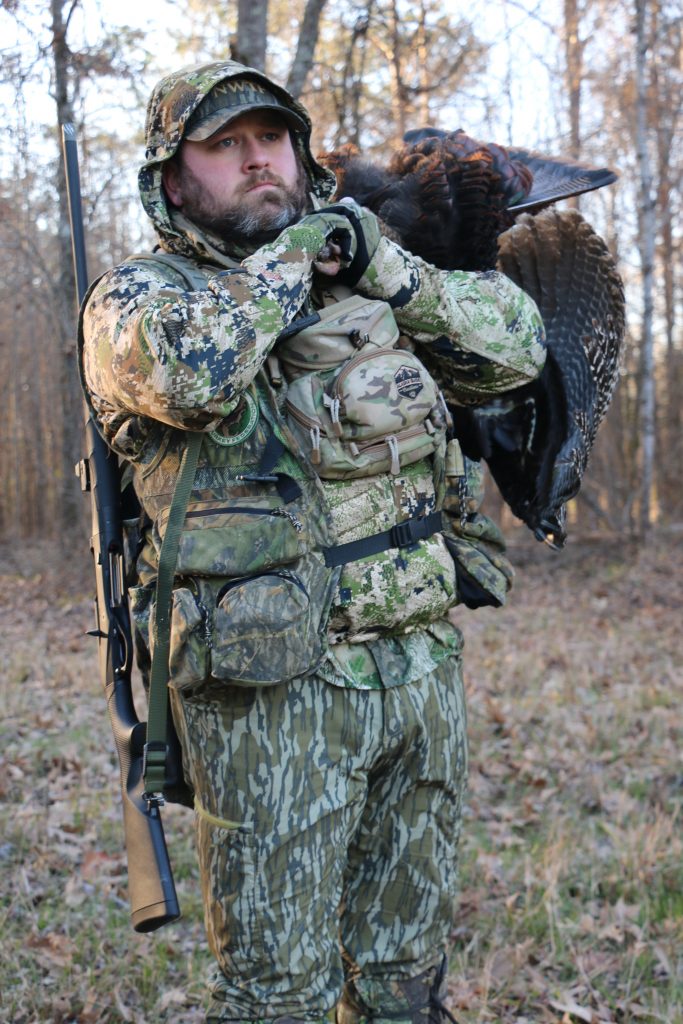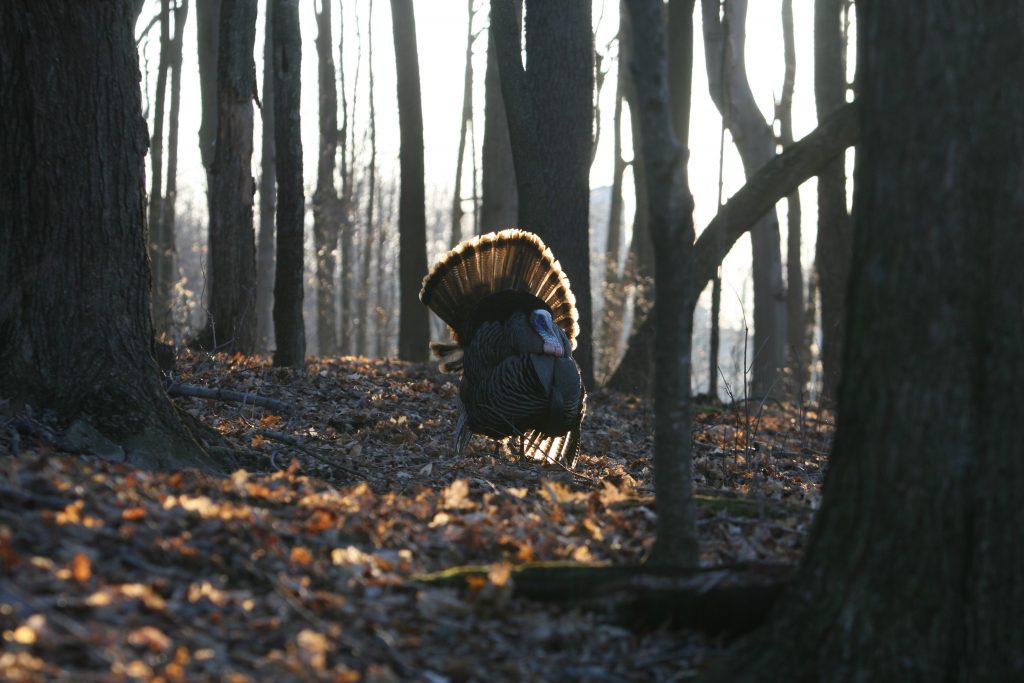Somewhere South of Winter: A Mississippi Journey
Balmy spring weather didn’t get the memo during this March trip to the Magnolia State. The turkeys, however, made up for it.

Maybe my phone was frozen, so I checked the GPS twice to confirm my location.
Yep, I was in Mississippi, and it was mid-March. But the temperatures? Straight out of a Midwest winter, and not quite what I’d expected for spring’s first hunt.

Yet when the first gobble echoed through the frigid air, thoughts of warming up vanished.
Into the South
A day earlier, I’d joined Robert Woods, owner of Cuffawa Creek Outfitters in northern Mississippi, for the first weekend of the state’s 2023 spring turkey season. Over supper, he expressed optimism at our chances, despite an unseasonably chilly forecast.
The first morning dawned sunny and still, and before sunrise, two gobbles announced the dawn about 600 yards from our listening post. Woods and I slipped as close as possible, stopping at a point of hardwoods to assess the situation. Soon, the birds gobbled at a crow about 100 yards away, so we quickly backed up and found a good setup. Meanwhile, several other turkeys fired up across a large draw.
The closest gobblers honored my tree yelps on the limb and then gobbled fairly regularly after flying down. They didn’t move much closer, though, so I went quiet to pique their curiosity. After a brief pause, I yelped again, and two gobbles hammered from the edge of the timber. They were coming.
I glimpsed the first longbeard at about 70 steps, ducking out of some pines and into a depression before the hardwoods. Two others followed. Within seconds, the lead gobbler stood at 40 steps and craned his neck high … behind a thick wall of brush. Without a shot, I silently hoped he’d move to the right and remain in range.
No dice. The turkey walked to our right but ducked below a terrain rise and slowly moved away. His cohorts followed, gobbling, and they were soon 100-plus yards distant and fading. I looked at Woods and rolled my eyes, stung by the close encounter.
But the morning had just begun, so we hit the restart button. Within an hour, Woods and I tried to slip close to a big breeding flock, but the group moved off before we got into position. Another property brought encounters with two gobblers, but neither played the game. At midmorning, the wind began to howl, and hunting got tougher. Several setups netted visits from hens and jakes, but gobblers stayed scarce.
Finally, during late afternoon, Woods steered his truck down a long field road but stopped suddenly. A glance through binoculars revealed a lone gobbler at the edge of a big stubble field. We watched the turkey peck around and then enter the woods right before dark. Guessing where he might roost, we sketched out plans for the morning. If we pulled it off, the second day might be finished quickly.
Cold to Colder
As Day 2 began, the truck thermometer read 26 degrees. Worse, the north wind from the previous afternoon had only increased. But Woods and I had a gobbler semi-roosted, so off we went. During the walk in, the wind bit into my face and ears, and I pulled the hood from my sweatshirt tight over my head.
After finding two big white oaks, Woods and I settled in, and I tried to listen for drumming or the day’s first gobble. Only the wind answered. And after a half-hour, as the sun peeked over the horizon, we conceded that the gobbler was gone. We didn’t know where he went, but he sure wasn’t there.
At the truck, Woods cranked the heater and asked about our next move. Would I prefer the hilltop spot, where we’d worked the three gobblers early on Day 1, or the bottoms, where we’d encountered the two uncooperative turkeys? I chose the former, so Woods headed that way. Halfway there, however, he changed his mind and ducked onto a side road.
“Let me just check another piece before we go there,” he said. “It’s not far, and the bottoms where that bird walked in last night connects to it.”
Soon, I understood his reasoning. The property featured beautiful open hardwoods that spilled into a picturesque creek bottom. Farther west, a large field opened up, surrounded by picturesque timber. It just seemed like a spot to yelp up a turkey.
As good as it looked, however, the situation required a bit of thought. The open timber and the fact that we hadn’t heard a gobble all morning indicated that a mobile strategy probably wouldn’t work. In fact, it would likely turn into a “cutt-and-bump” hunt. It’d be far smarter to find a good setup and cold-call for a bit.
We walked slowly toward the field edge, glassing as we went. Then we found two good trees about 20 steps from the field edge and agreed to sit for a while. My first series echoed through the sunny creek bottom, but nothing replied. “Don’t go crazy with the calling,” I thought. Anyway, a long pause would let me put down the cold slate and warm my fingers.
About 15 minutes and two calling series later, I cut my eyes to the right and started wondering what we should do next. The hilltop spot seemed obvious, but if turkeys weren’t talking much, the big timber could be tough. However, the more open terrain where we’d flirted with the two gobblers didn’t offer any guarantees, either.
As my eyes drifted back left, the problem resolved itself. A silent gobbler was approaching steadily at about 100 yards. After almost jumping in surprise, I stayed still and let him come. The long-beard stopped at about 75 steps to strut, and then turned left. There was a large tree between us, so I eased my shotgun into position and waited for the bird to reappear. Slowly, the bird minced steps into range but then stopped to peer into the timber, raising his head high. The Benelli M2 20-gauge barked, and the frigid morning suddenly got warmer.

Conclusion
Woods and I exchanged congratulations over the flopping gobbler and recounted the hunt. I admitted that I had started to lose confidence, and he nodded in agreement. But we’d stuck to our plan and had pressed on despite the crummy conditions.
After taking photos, we toted the gobbler to the truck and figured that a hot Sunday breakfast seemed like a good idea. I’d head home the next day, but Mississippi had been a gracious host — even if the cold weather reminded me of the frigid white desert back home.
CONNECT WITH US
National Wild Turkey Federation
770 Augusta Road, Edgefield, SC 29824
(800) 843-6983
National Wild Turkey Federation. All rights reserved.